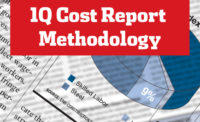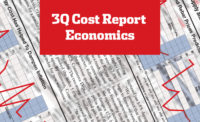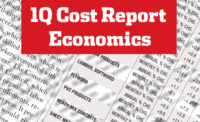Construction starts in the third quarter rose about 3% year-to-date despite a 9% decline in both August and July, with several large projects getting underway, according to Dodge Data & Analytics.
Commercial building and public works are current drivers of growth, says Bob Murray, DDA chief economist and vice president. Office construction is up 7% through the first eight months of the year, triggered by project starts such as the Spiral tower at Hudson Yards in New York City, a 1,031-ft-tall skyscraper estimated to cost up to $3.7 billion.
Manufacturing is up a staggering 51% year-to-date as construction begins on the estimated $6.5-billion uranium processing facility at the U.S. Energy Dept.’s huge nuclear complex in Oak Ridge, Tenn. The $810-million expansion of the Washington State Convention Center in Seattle accounts for some of the 12% increase in institutional building starts.
Public works has had a 7% increase from last year, with highways and bridges up 8% year-to-date, and environmental public works experiencing a 12% increase.
“The past two years have seen deceleration in the rate of growth for total construction, but it’s still too early to say that the current expansion has made the shift to decline,” says Murray. He adds that “it’s expected that the level of construction starts will see improvement in September or October.”
Lumber prices are finally slowing down after peaking at a 23.2% yearly increase in July. “The tariffs on Canadian lumber remain in place, at about 20%, but easing supply constraints and weaker than expected demand over the summer reduced upward pressure on prices,” says Thomas McCartin, senior economist at IHS Markit. “The transportation issues that began in the second half of 2017 and lingered into 2018 appear to have eased, allowing mills in Canada easier access to U.S. markets.”
|
Related Link |
ENR’s 20-city average price for lumber is 12.1% above what it was at this time last year, similar to IHS Markit’s third-quarter outlook, which indicates a 12.4% rise.
In steel, not much has changed since the second quarter, according to McCartin (see related story, p. 22). “Most countries face 25% tariffs on steel, which is about how much U.S. prices have climbed from a year ago. A few countries face quotas, which may cause spikes for specific products as the quotas near filling up,” he says.
The third-quarter outlook predicts a 14.6% rise for 2018, up slightly from the 12.9% noted in ENR’s second-quarter forecast. “Demand isn’t increasing at a rate that would warrant additional price gains. There are product-specific supply issues in the U.S. because of quotas, but otherwise supply is healthy,” says McCartin.
Energy prices produced the biggest shift in the third quarter, according to McCartin. “We changed our crude-oil price outlook quite a bit,” he says. “Capacity constraints for getting crude oil from drilling locations in the Permian Basin [Texas] to the market caused IHS to downgrade U.S. production for late 2018 and early 2019,” he says. “The second factor is largely because of reduced Iranian exports of crude oil. The U.S. is putting pressure on countries such as China and India, urging them to freeze or reduce imports of Iranian crude oil.”
The IHS Markit outlook for U.S. crude oil was up 33.1% in 2018, with prices set to rise another 2.6% in 2019. Alex Carrick, chief economist at ConstructConnect, notes that many of the largest price increases this year have been energy related.
“The international price of oil has moved up from $30 per barrel to $70 and sometimes higher,” he says. “But the $70 is expected to stay in place for a while. As each month passes, the new latest monthly number will be compared with a previous-year number that is rising over time until eventually there is a leveling off.”
On the labor side, skilled worker shortages continue to impact costs (see related story, p. 28) and contractors expect ongoing trends to worsen. The trend is particularly acute for pipe layers and sheet metal workers. “There is sure to be additional upward pressure on wages ahead, as the jobless rate [of 3.4%] in the sector has dropped below the rate [of 3.9%] for all jobs in the economy,” Carrick says.






Post a comment to this article
Report Abusive Comment